Bright and captivating, the polka dot plant (Hypoestes phyllostachya) is an exceptional addition to any home garden or indoor space.
With their flamboyant, dotted foliage, these plants add a touch of whimsy that’s hard to resist. But here’s a pressing question for all green thumbs, just how long do polka dot plants live?
Understanding a plant’s lifespan is pivotal to successful cultivation, and with polka dot plants, it’s no different. From optimal growth conditions to plant genetics, a variety of factors can influence how long these vibrant beauties thrive.
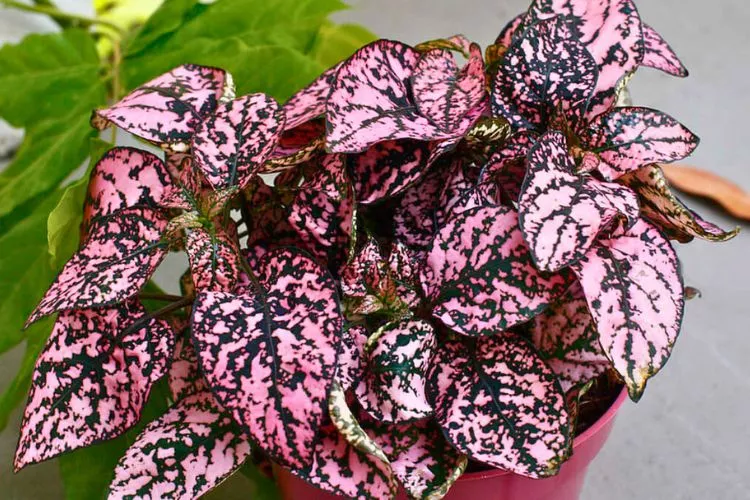
If you’ve ever struggled with wilted leaves or a plant that just doesn’t seem to last, this comprehensive guide is for you.
Table of Contents
Understanding Polka Dot Plants
Before we dive into the specifics of how long polka dot plants live, it’s crucial to understand these enchanting plants a bit better.
From their distinct characteristics to the various popular varieties and their growth requirements, this section will illuminate everything you need to know about polka dot plants.
Let’s embark on this enlightening exploration together.
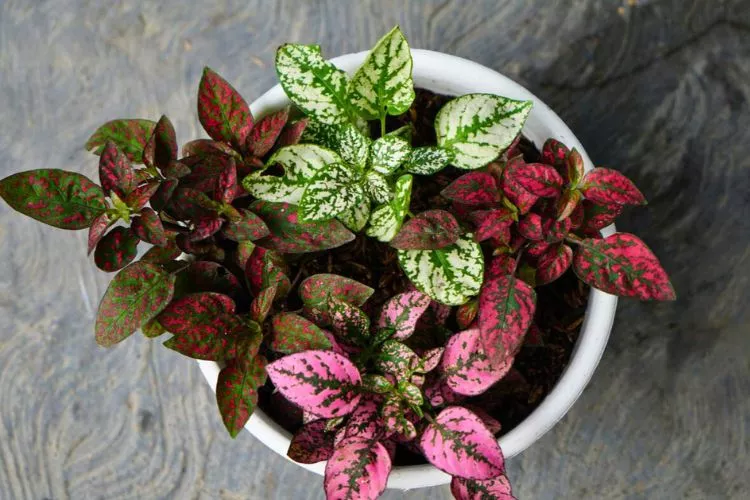
Description and characteristics of polka dot plants
A native of Madagascar, the polka dot plant, or Hypoestes phyllostachya, belongs to the Acanthaceae family.
This fascinating plant is admired for its lively and unique foliage, characterized by a green base speckled or splashed with contrasting shades of pink, white, or red, which indeed resembles a myriad of polka dots.
Typically, polka dot plants grow to a height of 10 to 20 inches (25 to 50 cm), making them perfect for compact spaces. The plant’s leaves are broadly oval, with a pointed tip, and the dappled color patterns can cover the entire leaf or be more freckled.
Though less well-known for their flowers, polka dot plants do produce small, purple flowers when allowed to bloom, usually under less ideal conditions.
Popular varieties and their unique features
The vibrant world of polka dot plants offers a variety of species that differ primarily in their color patterns. Some popular varieties include:
- Hypoestes phyllostachya ‘Pink Splash’: As the name suggests, this variety showcases a beautiful fusion of deep green leaves flecked with bright pink dots. Its vibrant color contrast is a sight to behold.
- Hypoestes phyllostachya ‘Red Splash’: The Red Splash polka dot plant is beloved for its richly colored red dots against a lush green backdrop. It adds a bold touch to any green space.
- Hypoestes phyllostachya ‘White Splash’: This variety features white spots on green leaves, giving it a somewhat softer and subtler appearance compared to its pink and red counterparts.
- Hypoestes phyllostachya ‘Confetti’: The Confetti variety is a multicolored spectacle with leaves splashed with pink, red, and white spots, resembling a carnival of colors.
- Hypoestes phyllostachya ‘Camina’: Camina sports a blend of dark and light pink spots on a green base, creating a charming and slightly muted contrast.
Each variety has its unique charm, but they all share the same polka-dotted appeal that makes them a delightful addition to your indoor or outdoor garden.
By understanding the distinct characteristics of each variety, you can choose the one that fits best with your aesthetic preferences and the overall vibe of your garden.
Environmental requirements for optimal growth
To cultivate a thriving polka dot plant, understanding its environmental preferences is key. Like all plants, polka dots have specific needs when it comes to light, temperature, humidity, soil, and watering.
Let’s break down each requirement to help you provide the optimal conditions for your plant’s growth.
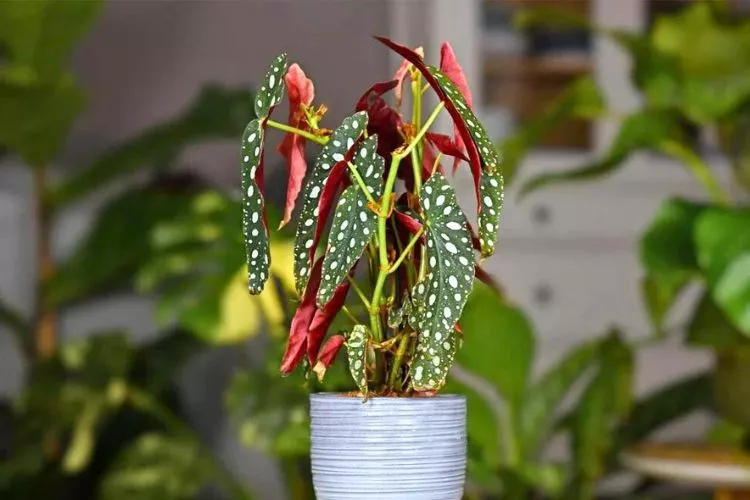
Light conditions
Polka dot plants love bright, indirect light. Direct sunlight can cause the leaves to fade and may even scorch them. However, too little light can result in less vibrant foliage and leggy growth as the plant reaches for the light.
An east or north-facing window, or a spot further away from a south or west-facing window, can provide the ideal light conditions.
Temperature and humidity levels
These plants prefer a warm environment, with temperatures ranging from 60-80°F (15-27°C). They’re not frost-tolerant, so ensure you bring them indoors during colder months if kept outside.
Polka dot plants also appreciate higher humidity levels, similar to their native tropical climate. If your indoor air is dry, consider using a pebble tray with water or a humidifier to increase humidity levels.
Soil type and pH preferences
Polka dot plants require well-draining soil to prevent waterlogging and root rot. A typical houseplant or general-purpose potting mix works well. The soil should be slightly acidic to neutral, with a pH range of 6.0-7.0 for best growth.
Watering needs
These plants prefer to be kept consistently moist but not waterlogged. Watering them thoroughly once the top inch of soil feels dry to the touch is generally a good practice.
Be cautious of overwatering, as this can lead to root rot – a common issue for these plants. Underwatering, on the other hand, can cause the leaves to wilt. Consistent, moderate watering is the key.
How Long Do Polka Dot Plants Live? (The Average Lifespan)
As we’ve delved into the captivating world of polka dot plants and their unique requirements, it’s now time to answer the main question – how long do polka dot plants live?
In this section, we’ll unravel the typical lifespan of these striking plants and the factors that can influence their longevity. So, let’s delve in and discover how to enjoy the vibrancy of polka dot plants for as long as possible.
Average lifespan of polka dot plants in their natural habitat
In the wild, where they are indigenous to the island nation of Madagascar, polka dot plants can exhibit a significantly different lifespan compared to their cultivated counterparts.
Given the right conditions in their native tropical rainforest habitat, these plants are known to grow as perennials, living and thriving for multiple years. They have adapted to the year-round warm climate, the high humidity, and the rich, well-draining soil of the rainforest floor.
While it’s tough to pinpoint the exact lifespan of polka dot plants in the wild due to variations in environmental conditions and the threat of natural predators, it is safe to say they can persist for several years with the right combination of climate, soil, and protection from herbivores.
Some mature plants have been observed to survive for up to 5 years or more in the wild.
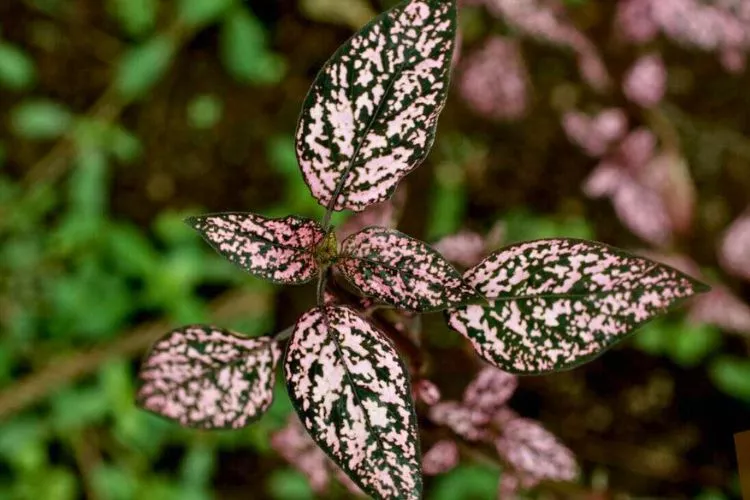
In their natural habitat, polka dot plants form a part of the undergrowth, relishing the dappled light that filters through the dense canopy overhead.
This natural condition allows them to retain their colorful foliage throughout their lifetime. Additionally, they enjoy a continuous cycle of growth and flowering due to the constant warm temperatures and availability of water and nutrients.
It’s interesting to note that while in domestic cultivation, polka dot plants are primarily grown for their decorative leaves, in the wild, their survival and propagation are tied closely to their flowering and seeding stages.
These plants, unperturbed by the pruning shears of a gardener, freely produce small, delicate lilac flowers. These blooms later give way to tiny seeds, which then disperse and germinate, perpetuating the life cycle of the species in the wild.
This longevity and ability to reproduce efficiently in their natural environment demonstrate the plant’s resilience and adaptability, traits that they carry into our homes and gardens when we choose to cultivate them.
Factors affecting the lifespan of indoor and outdoor polka dot plants
When cultivated in home gardens or indoor spaces, the lifespan of polka dot plants can be influenced by numerous factors. Let’s take a closer look at these key elements that play a crucial role in determining your plant’s longevity.
Growth conditions
The growth conditions you provide for your polka dot plant significantly contribute to its lifespan. Ideal conditions aren’t just about the plant’s survival but also its ability to thrive, grow vibrantly, and resist stressors that could reduce its lifespan.
Consider the light conditions. Polka dot plants appreciate bright, indirect light to keep their leaves’ vibrant color. Too little light leads to less colorful foliage, while too much direct sunlight can cause the leaves to scorch.
The temperature and humidity also matter. These plants prefer warmer temperatures, around 70-80 degrees Fahrenheit (21-27 degrees Celsius), and a high humidity level, as they hail from Madagascar’s warm, tropical climate. If the environment is too cold or too dry, the plant may struggle and experience a shortened lifespan.
Soil and watering conditions play a crucial role as well. Polka dot plants prefer well-draining soil to prevent waterlogged roots, which can lead to root rot.
However, they also require regular watering to keep the soil evenly moist – not too wet and not too dry.
Flowering
Flowering is a significant phase in the lifecycle of a polka dot plant. While the flowers are quite small and less impressive compared to the colorful foliage, they indicate that the plant has reached maturity.
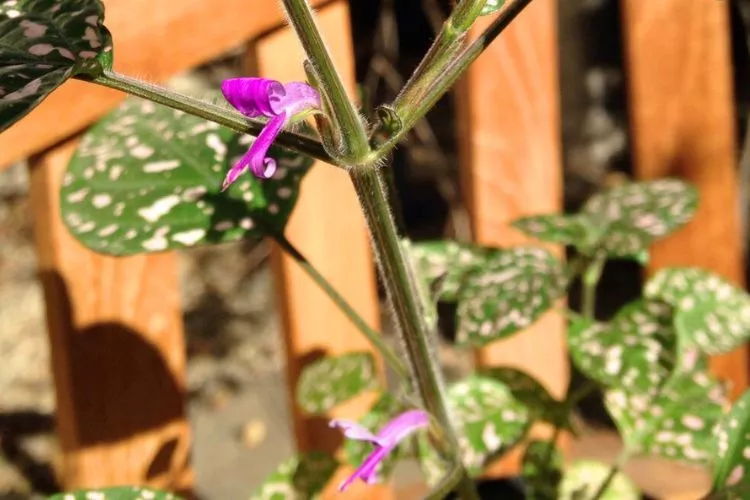
Polka dot plants are known for their stunning leaves rather than their flowers. Hence, many growers choose to pinch off the flowers to encourage more foliage growth.
This is because, in many plants, blooming takes a considerable amount of energy and resources, which could otherwise be used for leaf growth. In some cases, once a plant has flowered, it might start to decline.
However, it’s essential to remember that allowing your polka dot plant to flower isn’t inherently detrimental to its health or lifespan. The plant is naturally programmed to reach this stage in its lifecycle.
What’s more crucial is the care and conditions you provide during and after its flowering phase.
Pests and diseases
Pests and diseases can significantly impact the lifespan of polka dot plants, often leading to declining health and, in extreme cases, plant death. This is why preventative measures and swift, effective treatments are crucial to ensure the longevity of your vibrant plant.
Common pests that pose a threat to polka dot plants include spider mites, whiteflies, and aphids. These tiny critters feed on plant sap, causing leaves to yellow, wilt, or drop off. An infestation, if not dealt with promptly, can weaken the plant and ultimately shorten its life.
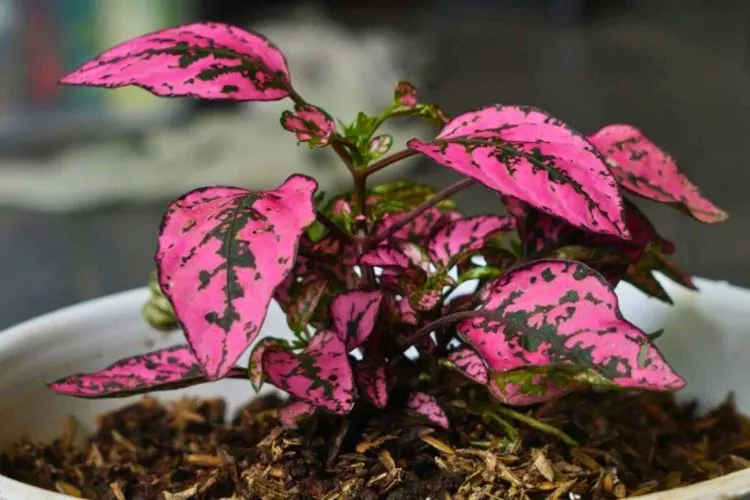
Fungal diseases, often triggered by overwatering or poor air circulation, can also be detrimental. Issues such as root rot or powdery mildew not only mar the plant’s beauty but also interfere with its ability to absorb nutrients, leading to a gradual decline in health and potential death.
Combating these issues involves regular plant checks for early signs of infestation or disease, appropriate watering and ventilation practices, and the use of organic or chemical treatments as necessary.
By maintaining a keen eye and acting swiftly at the first signs of trouble, you can keep your polka dot plant pest-free, disease-free, and primed for a long, healthy life.
Pruning and propagation practices
Pruning and propagation practices play a significant role in managing the lifespan of polka dot plants. Proper pruning encourages bushier growth, reduces legginess, and can help your plant maintain its vibrant, decorative appearance for longer.
Regular pruning, which involves removing leggy stems and pinching back the plant’s tips, encourages the growth of new branches and leaves. This keeps the plant compact and attractive, which is especially important for polka dot plants as their beauty lies in their dense, colorful foliage.
However, remember to prune with a clean, sharp tool to prevent disease transmission.
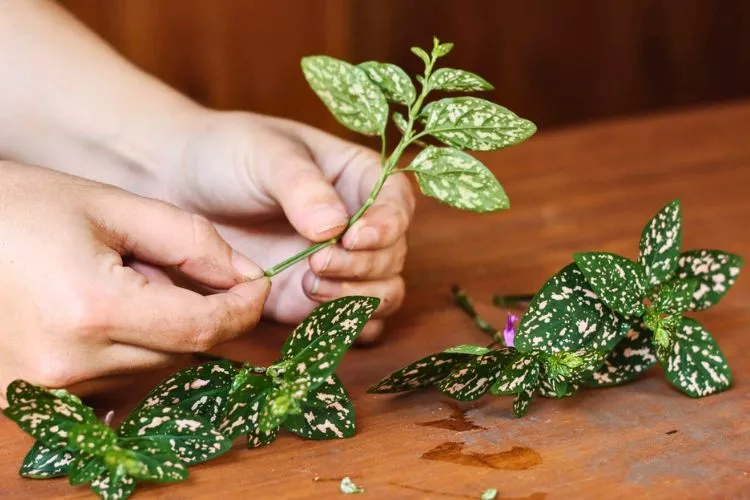
In terms of propagation, polka dot plants can effectively be cloned through stem cuttings. This practice not only helps in renewing the life cycle of the plant but also ensures the preservation of specific desirable traits.
Propagating a polka dot plant from a healthy, mature plant can result in a new plant with the same genetic resilience as its parent. Moreover, propagation can serve as a backup plan for your beloved plant.
If the parent plant starts declining due to age or disease, a propagated offspring can continue to bring the same charm to your space.
Remember, the key to successful propagation lies in choosing healthy stems for cuttings, providing the right growing conditions for the new plants, and exercising patience. This process, coupled with regular pruning, will aid in maintaining a cycle of vibrant, long-living polka dot plants.
Genetics
Genetics, the building blocks of life that dictate the characteristics of living organisms, play a critical role in determining the lifespan of polka dot plants. The genetic makeup of a polka dot plant, which is passed down from parent plants to offspring, can significantly influence its health, growth, and longevity.
Each variety of polka dot plant carries a unique set of genes that determine its unique attributes – such as leaf color, growth pattern, disease resistance, and more. These genetic traits not only define the plant’s aesthetic characteristics but also its hardiness and response to environmental stresses.
For instance, some polka dot plant varieties are genetically predisposed to have a stronger resistance to certain pests or diseases. This resistance can result in a longer lifespan as the plant can effectively combat threats that may otherwise shorten its life.
Similarly, some varieties might have genes that make them more adaptable to varying light conditions or temperature ranges, enabling them to thrive in less-than-optimal circumstances.
It’s important to note that while genetics play a fundamental role, they are not the sole determinants of a polka dot plant’s lifespan.
Environmental factors and care practices significantly impact the expression of these genetic traits. For example, a genetically robust plant that is subjected to poor care and unfavorable growing conditions may not live as long as a less robust plant that is well-taken care of.
As a gardener, you might not be able to change the genetic predispositions of your polka dot plants. Still, by understanding their potential influence, you can adjust your care practices to complement these inherent traits.
This knowledge can be especially helpful when dealing with a plant that seems to struggle despite receiving proper care, as it might be facing genetic limitations that are harder to overcome.
Stages of Growth in Polka Dot Plants
Journeying through the lifecycle of a polka dot plant is a captivating experience. This colorful foliage plant goes through distinctive stages of growth, each with its own charm and care needs.
In this section, we will navigate through these stages, shedding light on what to expect at each point and how to tailor your care approach to best support your plant’s growth and vitality.
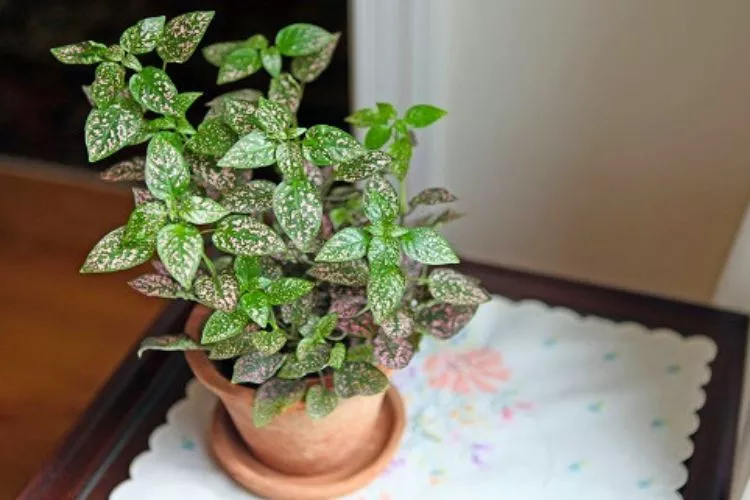
Germination and early development
Starting a polka dot plant from seed is a gratifying journey, as you watch the plant evolve from a tiny seed to a sprout and then to a small plant.
The germination process begins when the seed is sown in a warm, moist, and well-draining soil. Given optimal conditions — around 70-75°F (21-24°C) — germination typically occurs within 10 to 20 days.
In the early development stage, tiny green shoots begin to emerge from the soil, unfurling into small leaves. It is critical at this stage to keep the soil consistently moist but not waterlogged, and the seedlings should be placed in bright, indirect light.
Overwatering or inadequate lighting can cause the seedlings to become leggy or result in damping-off, a common disease that can kill young plants.
Juvenile growth phase
After a successful germination and early development stage, the polka dot plant enters its juvenile phase. This is a stage of rapid growth where the plant begins to expand in size and produce the distinctive, polka-dotted leaves that give it its name.
During this phase, maintaining the ideal conditions is paramount. Ensure the plant receives bright, filtered light to encourage the development of vibrant foliage.
It’s essential to continue with regular watering to keep the soil evenly moist, adjusting as needed depending on the environment’s humidity and temperature.
Furthermore, feeding your juvenile polka dot plant with a balanced, diluted fertilizer every two weeks during the growing season can provide the nutrients it needs to fuel its growth. It’s also a good idea to rotate the plant occasionally to ensure even light exposure, leading to balanced growth.
Remember, it’s during this phase that the foundations for a healthy adult plant are laid down, so investing your time and care now will pay dividends in the plant’s later stages.
Mature growth phase
When the polka dot plant reaches its mature growth phase, it’s a sight to behold. The foliage is lush and vibrant, bringing a splash of color to your space. The plant typically reaches a height of 1 to 2 feet (30 to 60 cm), but can grow up to 3 feet (90 cm) in ideal conditions.
During this phase, care for your polka dot plant should remain consistent, with regular watering and feeding. However, one aspect to pay attention to is pruning.
Mature polka dot plants tend to get leggy if left unchecked, and regular pruning helps maintain a bushy, compact shape and encourages vibrant leaf growth.
Now is also the time to watch for the small, delicate flowers that the plant produces. As discussed earlier, flowering can take a considerable toll on the plant’s resources, and many growers choose to pinch them off to redirect energy to foliage growth.
Signs of aging and declining health
As with all living things, polka dot plants eventually show signs of aging and declining health. It’s important to remember that these are natural stages in the plant’s life cycle, but some symptoms may indicate care issues that can be addressed.
Older polka dot plants may lose some of their vibrant leaf color and become less vigorous in their growth. You may also notice more frequent leaf drop or wilting, which could be a normal part of the plant’s aging process or could signal inadequate watering or lighting.
Diseases and pests can also pose challenges as the plant ages. Root rot, common in plants that are overwatered or have poor drainage, and pests such as aphids and spider mites can be more damaging to older, less vigorous plants.
In general, it’s key to continue providing the necessary care and promptly addressing any issues. Remember, even as your plant ages, it can still bring much joy and beauty into your life!
Extending the Lifespan of Polka Dot Plants: Care Tips
Polka dot plants bring joy and vibrancy to any space, and naturally, we want them to thrive for as long as possible.
In this section, we’ll dive into the essential care tips to extend the lifespan of your polka dot plant, helping it to flourish year after year and maintain its captivating beauty.
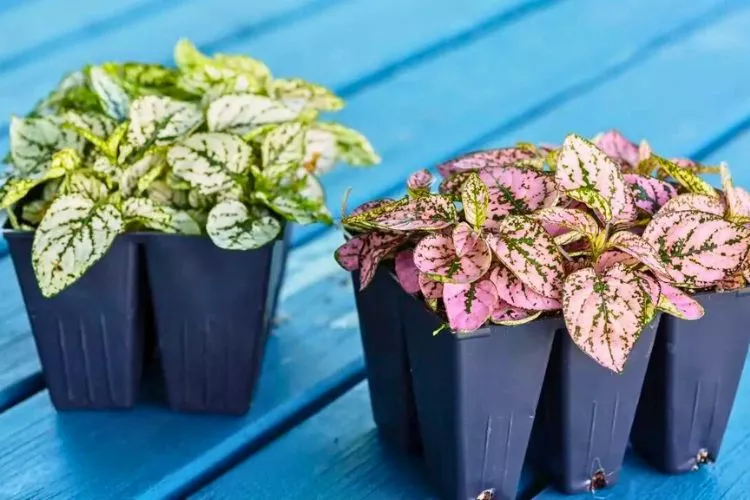
Light and temperature management
When it comes to ensuring the longevity of your polka dot plant, lighting and temperature control play pivotal roles.
This vibrant houseplant is a bit of a Goldilocks; it prefers a spot that is ‘just right’ – not too bright, not too dark. Filtered or indirect light is the ideal condition as direct sunlight can bleach the colored spots on the leaves or cause scorching.
The ideal temperature for your polka dot plant to thrive is between 65°F and 75°F (18°C to 24°C). Be cautious about sudden temperature changes, as this can cause stress to the plant. Avoid placing it near air conditioning units or draughty windows, as cold drafts can lead to leaf drop.
Watering techniques and common mistakes to avoid
Watering is a crucial part of plant care, but it’s also where most errors occur. It’s vital to water your polka dot plant correctly to maximize its lifespan and health.
Polka dot plants like evenly moist soil, but not waterlogged or dry conditions. Water thoroughly until water runs out of the bottom of the pot, then let the top inch (2.5 cm) of soil dry out before watering again. Be aware that overwatering can lead to root rot, a fatal condition for your plant.
Also, remember to adjust watering based on the seasons. Plants typically need less water during the cooler, darker winter months than in the warm, bright summer.
Lastly, be sure to use room-temperature water. Cold water can shock the plant’s roots, and hot water can cause root damage, both leading to an unhappy plant.
Soil preparation and fertilization
Choosing the right soil and providing necessary nutrients plays an integral part in the life of a polka dot plant. This lively foliage loves well-draining soil with a slightly acidic to neutral pH level, between 6.0 and 7.0. An equal mix of peat moss, perlite, and potting soil usually works well.
Ensure that the soil is loose and fluffy, promoting good air circulation around the roots.
Fertilization provides the extra boost of nutrients that your polka dot plant craves. During the growing season (spring through fall), feed your plant with a balanced, water-soluble houseplant fertilizer every two weeks.
In winter, reduce feeding to once a month, as plants typically enter a dormant phase and need less nourishment. Always follow the manufacturer’s instructions when applying fertilizer to prevent nutrient burn.
Pruning and grooming for healthier growth
A well-pruned polka dot plant is a healthy and attractive plant. Regular trimming encourages bushier growth and prevents your plant from becoming leggy and sparse. The best time to prune is in spring or early summer, during the plant’s active growth period.
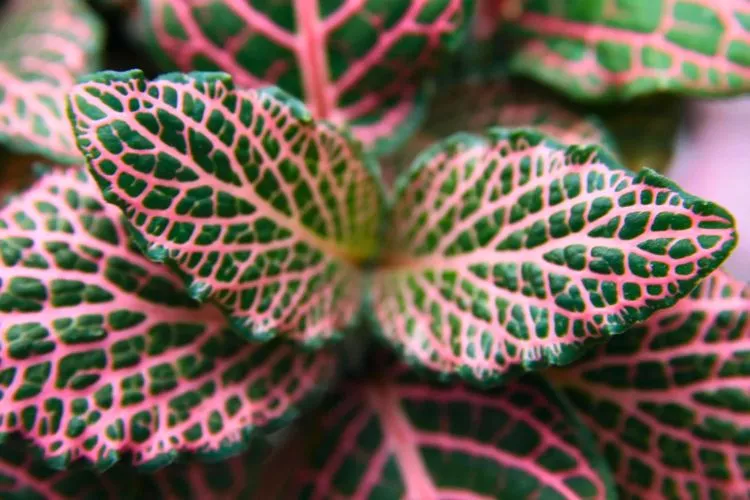
Cut back any elongated stems to a pair of leaves. This action triggers the plant to grow two new stems from the cut point, enhancing its overall bushiness. Plus, pruning helps maintain the compact, lush appearance that polka dot plants are known for.
Regular grooming by removing any yellowed, damaged, or diseased leaves also contributes to your plant’s health and aesthetics. This habit not only keeps your plant looking its best but also allows you to monitor its health closely and catch potential problems early.
Pest and disease prevention and control
Despite their robust nature, polka dot plants aren’t entirely immune to pests and diseases. The most common pests that can trouble your plant include aphids, spider mites, and whiteflies.
You might notice yellowing leaves, stunted growth, or a sticky residue on the plant or nearby surfaces – all signs of a potential pest problem.
Prevention is always the best approach. Maintain good plant hygiene by cleaning the leaves regularly, and ensure your plant has the proper light, water, and nutrients. Overcrowding of plants can also attract pests, so ensure adequate spacing.
If you do spot pests, don’t panic! Remove them manually if there are just a few, or treat with a mild insecticidal soap or neem oil for larger infestations. Be sure to isolate the affected plant to prevent pests from spreading to other plants.
As for diseases, polka dot plants can occasionally suffer from root rot due to overwatering or poorly draining soil, or powdery mildew from high humidity. If you see brown, mushy roots or a white powdery substance on leaves, it’s time to act.
For root rot, you’ll need to remove the diseased parts, possibly repot the plant, and adjust your watering schedule. For powdery mildew, reduce humidity and consider a mild fungicide if necessary.
Regular inspections can catch problems early and ensure your polka dot plant has a long, healthy life. Remember, a little attention goes a long way with plant care!
How to propagate Polka Dot Plants: Renewing the Life Cycle
One of the best ways to keep enjoying the vibrancy of polka dot plants, long past their natural lifespan, is through propagation.
Propagation not only renews the life cycle of these delightful plants, but it also provides you an opportunity to expand your indoor jungle or share it with others. Let’s delve into the fascinating process of giving new life to these polka dot beauties.
Methods of propagating polka dot plants
There are two main ways to propagate your polka dot plant – through stem cuttings and seed propagation. Both methods have their advantages and specific steps, but don’t worry, neither is overly complicated.
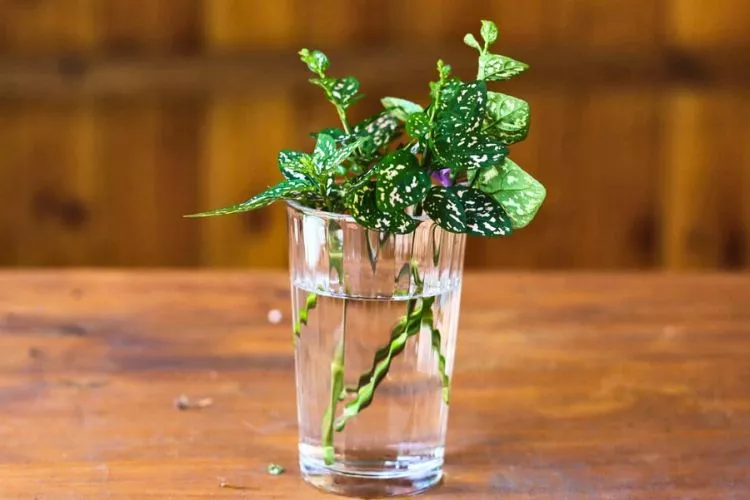
Stem cuttings
Using stem cuttings is the most popular and simplest method to propagate your polka dot plant. Here’s what you need to do:
- Choose a healthy stem from your polka dot plant, preferably one with new growth. Cut around 4-6 inches (10-15 cm) from the tip of the stem, ensuring there are a few leaves left on it.
- Remove the lower leaves from the cutting, leaving a couple of sets of leaves at the top.
- Plant the cutting in a pot filled with a mix of peat moss and perlite. Make sure to keep the soil slightly moist.
- Place the pot in a well-lit area, but out of direct sunlight to avoid scorching the delicate new growth.
- After a few weeks, you’ll see new growth signaling that the cutting has rooted successfully.
Seed propagation
While not as commonly used as stem cuttings, seed propagation is another option, particularly if you wish to grow a large number of plants.
- Obtain polka dot plant seeds from a reliable source. They’re tiny, so handle with care.
- Sow the seeds on the surface of moist seed-starting mix, and lightly cover them with a sprinkle of soil.
- Maintain a warm temperature of around 70-75°F (21-24°C) and high humidity by covering the pot with a plastic wrap or placing it in a mini greenhouse.
- After the seedlings appear, remove the cover and place them in a bright spot, but away from direct sunlight.
- Once they have a couple of sets of true leaves, you can transplant them to individual pots.
Remember, patience is key! Both methods require a bit of waiting, but the results are truly rewarding.
Step-by-step guide to successful propagation
Whether you’re propagating from stem cuttings or seeds, the steps to successful propagation require attentiveness and care. Here’s a quick overview of the steps you’ll need to follow:
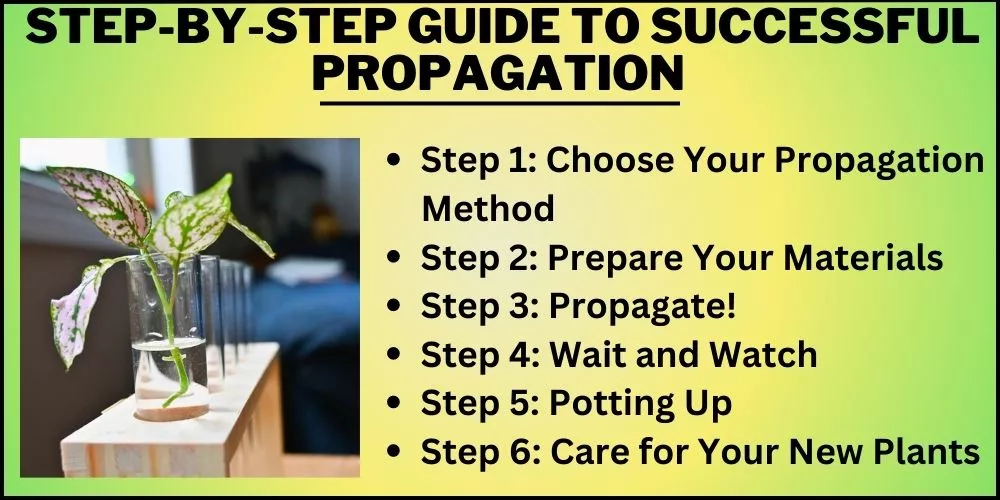
Step 1: Choose Your Propagation Method
The first step is to decide whether you want to propagate your polka dot plant from stem cuttings or seeds. Remember, stem cuttings are quicker and generally more successful, but seed propagation can be a fun challenge and is great if you want to grow many plants.
Step 2: Prepare Your Materials
Next, gather all the necessary materials. You’ll need a sharp, clean pair of garden shears for stem cuttings, peat moss, and perlite or a seed-starting mix, small pots, and a plastic wrap or mini greenhouse for creating humidity. If you’re propagating from seeds, make sure you have your seeds ready.
Step 3: Propagate!
Now for the exciting part: the propagation! Follow the detailed steps provided in the previous section, depending on the method you’ve chosen. Be careful to handle the seeds and cuttings gently.
Step 4: Wait and Watch
Patience is crucial in this step. Regularly check your cuttings or seeds to ensure they’re in optimal conditions and adjust as needed. You’ll see the first signs of growth in a few weeks.
Step 5: Potting Up
Once your cuttings have rooted or your seedlings have grown a few sets of true leaves, they’re ready to be transferred to individual pots with well-draining potting mix.
Step 6: Care for Your New Plants
After successful propagation, care for your new polka dot plants as you would the parent plant. Regular watering, indirect light, and occasional feeding will keep them vibrant and healthy.
Troubleshooting: Identifying and Solving Common Issues
Even with the best care and intentions, you might encounter a few hurdles on your journey with polka dot plants. But no need to worry!
Most common issues are easily identified and can be quickly remedied with a few changes. Let’s discuss some of these problems and find ways to keep your plants healthy and thriving.
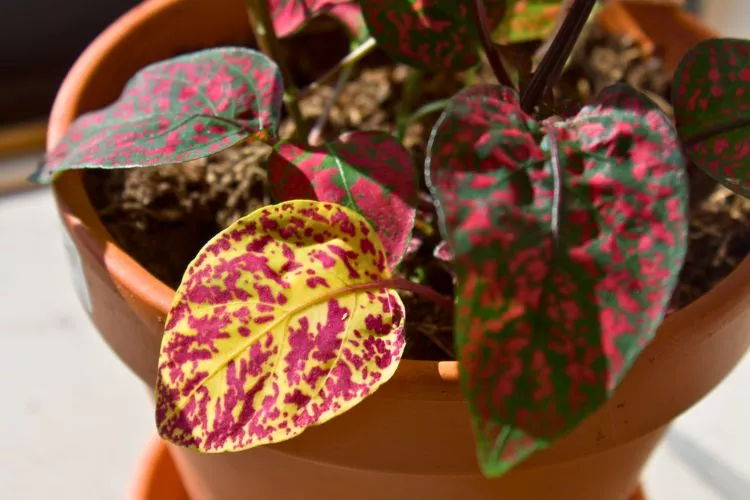
Yellowing leaves and leaf drop
When you notice leaves turning yellow or dropping off, your plant might be getting too much water. Ensure the pot has good drainage and only water when the top inch (2.5 cm) of soil is dry. On the flip side, underwatering can also cause leaf drop. It’s all about finding the right balance.
Browning edges and wilting
Browning leaf edges often point to low humidity. Remember, polka dot plants originate from Madagascar where humidity is high. To recreate this, you can mist the plant regularly, place it on a pebble tray filled with water, or use a humidifier.
Wilting, on the other hand, can result from either too much sun causing the plant to dry out, or a lack of water. If the soil is dry, give your plant a good drink. If it’s due to too much sun, move it to a location with more indirect light.
Fungal infections and diseases
Polka dot plants can occasionally suffer from fungal diseases, such as leaf spot or powdery mildew. These usually show as black or brown spots or a white powdery substance on the leaves.
To prevent this, avoid watering the foliage and ensure your plant has good air circulation. If the infection is present, remove the affected leaves and treat the plant with an organic fungicide.
Creative Uses of Polka Dot Plants
Beyond their charming foliage and easy-care nature, polka dot plants offer many creative possibilities for both indoor and outdoor settings.
Their vibrant colors and intriguing patterns make them an excellent choice for a variety of decorative projects. Let’s explore some inspiring ways to showcase these plants.
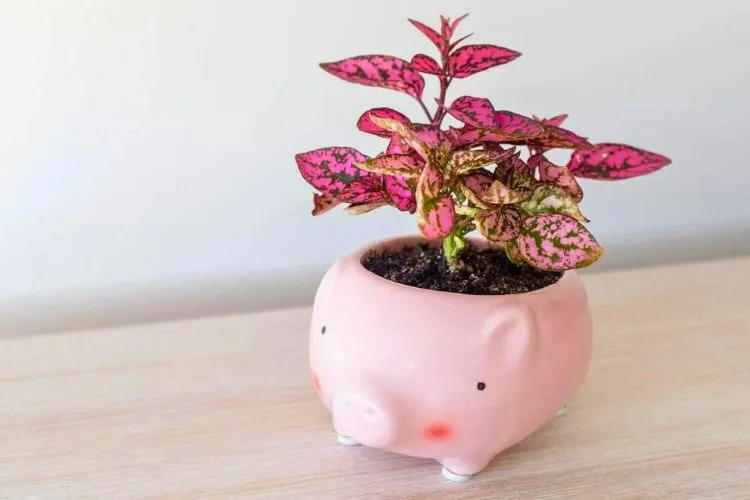
Indoor and outdoor decoration ideas
Inside the home, polka dot plants can provide a pop of color to any room. They work well in mixed plant containers, on windowsills, or as an unexpected surprise in a bookshelf. They’re also stunning when placed in hanging baskets, with their vibrant leaves cascading down.
Outdoor, they can be utilized in garden borders or patio containers. You can create a dramatic effect by planting them en masse or use them as an accent in flower beds to highlight other plants.
Companion planting and landscaping
Polka dot plants make great companions for a variety of plants due to their ability to grow in diverse conditions. For example, in an indoor setting, they complement ferns, philodendrons, and other shade-loving plants.
In an outdoor landscape, they can be paired with hostas, impatiens, or coleus to create a stunning shade garden. The key to successful companion planting is understanding the needs of each plant to ensure they are compatible and can coexist harmoniously.
Frequently Asked Questions (fAQs)
How fast do polka dot plants grow?
Polka dot plants are fast growers, typically reaching their full size (30-50 cm or 12-20 inches tall) within a few months when given optimal conditions.
What are the most common pests that affect polka dot plants?
Common pests include aphids, spider mites, and whiteflies. These can be controlled with regular inspection and, if necessary, use of organic pest control methods.
Can I revive a dying polka dot plant?
Yes, with proper care such as adequate water, light, and temperature adjustments, a dying polka dot plant can often be revived.
How often should I fertilize my polka dot plant?
Fertilize every two weeks during the growing season (spring and summer) with a balanced houseplant fertilizer. Always follow label directions.
Is misting beneficial for polka dot plants?
Yes, polka dot plants appreciate a humid environment. Regular misting or placing the plant on a pebble tray with water can help maintain humidity.
How often do polka dot plants flower?
In their natural habitat, polka dot plants may flower year-round. Indoors, flowering can occur anytime but is less predictable.
Conclusion:
In conclusion, the lifespan of a polka dot plant, Hypoestes phyllostachya, hinges on a multitude of factors ranging from optimal growing conditions to diligent care practices and their inherent genetic traits.
Understanding these elements enables us to nurture these vibrant houseplants and extend their lifespan, creating an aesthetically pleasing living environment.
We’ve unpacked how to propagate these plants, common issues and their resolutions, and some creative ways to incorporate them into your home or garden.
We hope that this guide has been helpful. You can read about similar topics here on our website. Check back again soon for more.


